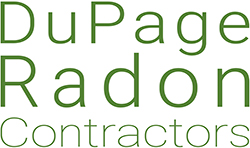Surprisingly, the discovery of radon only occurred at the outset of the 20th century. It was well after the industrial revolution that we discovered how radon was affecting our health and environment. The battle to combat its deadly effects continues to this day.
Discovery of Radon
The history of radon began when Friedrich Ernst Dorn, a physicist and university professor in Germany, first discovered that radon, a radioactive substance, was emitted from radium in 1900. He learned about radon while working on identifying radioactive materials emitted by thorium, then quickly found out that radium and thorium both emitted the same radioactive substance.
First termed “emanation” by Dorn and “radium emanation” by Ernest Rutherford, who had begun the work extended by Dorn on thorium, international scientists quickly adopted the term “radon.”
Continuing Work on the Properties of Radon
After discovery of radon gas, which was determined to be a new element, two brilliant scientists began examining and cataloging the properties of the gas. William Ramsay, who won the Nobel Prize in chemistry in 1904 for discovering the existence of noble gases, worked with Robert Whytlaw Gray to create a new column of noble gases on the periodic table.
In a big moment in the history of radon, they isolated radon and calculated its density for inclusion in the periodic table. Though they originally named it “niton” from the Latin word for “shining,” the name was not popular and it became internationally known as “radon.”
At and around room temperature, radon is a colorless gas. However, when it dips below its freezing point, is phosphoresces in a yellow or orange hue. It holds the chemical symbol Rn, atomic number 86 with an atomic weight of 222.
Uses of Radon in History
Though radon is largely a dangerous, cancer-causing radioactive gas, it has been used by hospitals to treat cancer. Even today, some hospitals keep radium for therapeutic use, but its dangers are now well known to outweigh its benefits. However, under controlled use, some discoveries suggest that radon still has the potential to help battle certain types of cancer cells.
Hospitals keep a radium source handy and seal the gas in small tubes. They call the tubes seeds, or needles, and use them exclusively as an aid to modern cancer-fighting techniques.
Before it was harnessed for medical science, however, radon had a long history of inducing illness in miners. As far back as 1530, when terminal disease caused by radon was known as mala metallorum, there are documented cases of mountain sickness which we now know as lung cancer.
Discovering Residential Radon
Perhaps the most interesting radon story is about how awareness developed regarding the dangers of radon in homes.
In 1984, a worker by the name of Stanley Watras set off a radiation detector while helping build a nuclear power plant in Pennsylvania. This baffled the installers of the safety equipment because there was no radioactive material in the plant yet. They had just installed the equipment and assumed it was merely malfunctioning. The equipment turned out to be working correctly. They tested his house and found such high levels of radon that his person had become radioactive. This event caught publicity and triggered intensive research and spreading awareness of the prevalence of indoor radon and its effects.
Radon Today
Despite the late discovery of radon, we have an understanding beyond that of previous generations of the risks of radon exposure. However, radon mitigation efforts are still tragically limited. To help lower the risk of lung disease and cancer, consumers carry the responsibility of increasing awareness of radon mitigation basics and the importance of taking action.
Educate yourself to arm you and those important to you against the dangers of radon. Radon mitigation is currently our only answer to a growing radon problem, but you can start doing your part to rid yourself and your loved ones today.





